Abstract
BACKGROUND: Screening for hearing loss in English children at entry to school (age 5-6 years) is usually by pure tone audiometry sweep undertaken by school nurses. This study aimed to compare the validity and screening rates of pure tone audiometry with impedance screening in these children. METHODS: Two stage pure tone audiometry and impedance methods of screening were compared in 610 school entry children from 19 infant schools in north east England. Both procedures were completed by school nurses. The results of screening were validated against subsequent clinical assessment, including otological examination and actions taken by an independent assessor. RESULTS: Both methods produced broadly similar validation indices after two stages of screening: sensitivity was 74.4% for both methods; specificity was 92.1% and 90.0%; and predicted values of a positive test 43.2% and 37.6% respectively for pure tone audiometry and impedance methods. Single stage screening in both methods produced higher sensitivity but lower specificity and predictive values of a positive test than two stage screening. Screening rates were appreciably higher with impedance methods than with pure tone audiometry. CONCLUSIONS: In choosing the method to be used, it must be borne in mind that the impedance method is technically more efficient but takes longer than pure tone audiometry screening. However, the latter method allows opportunity for other health inquiries in these children.
Full text
PDF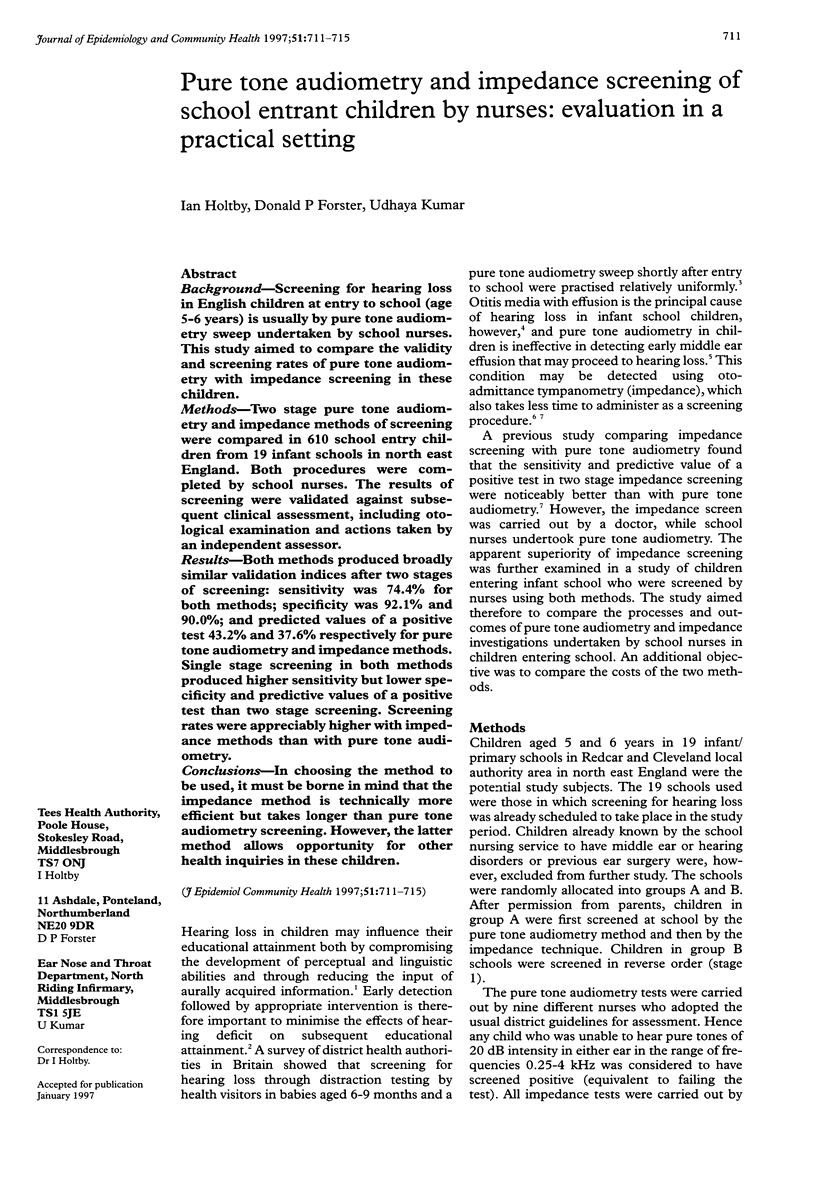
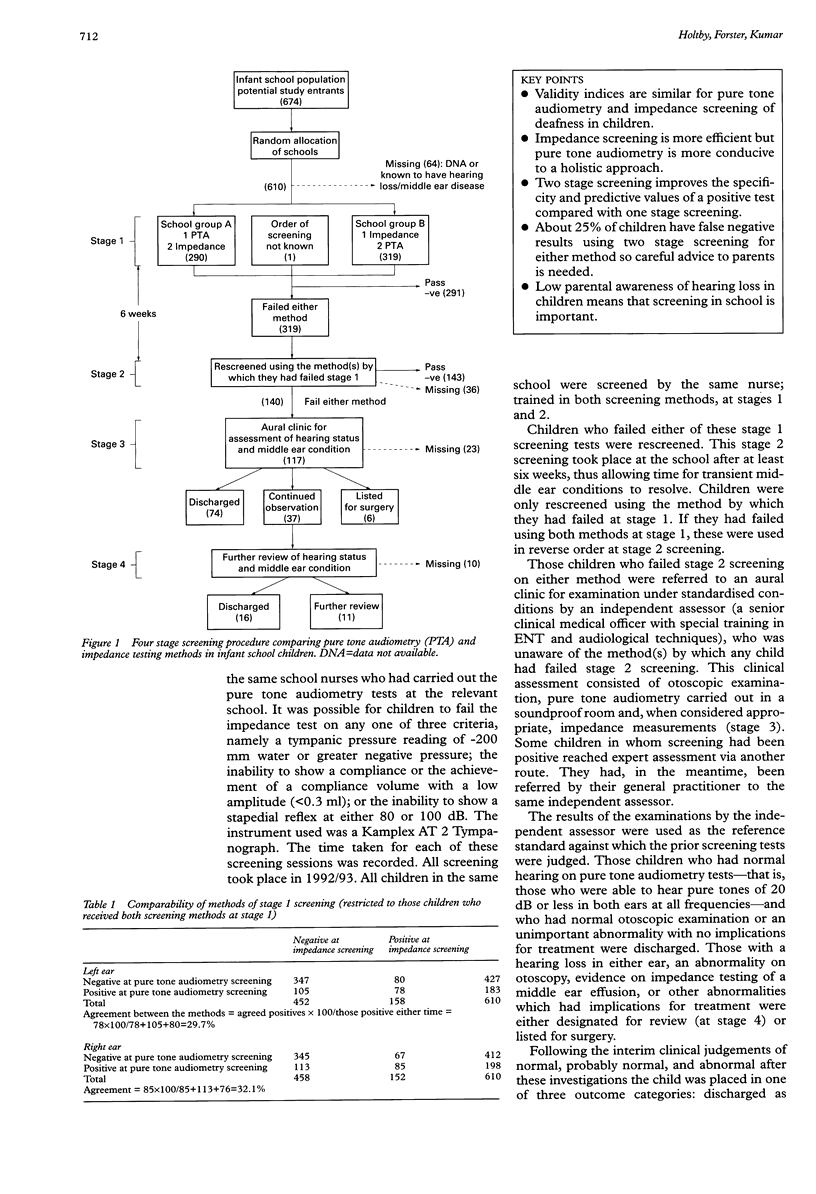
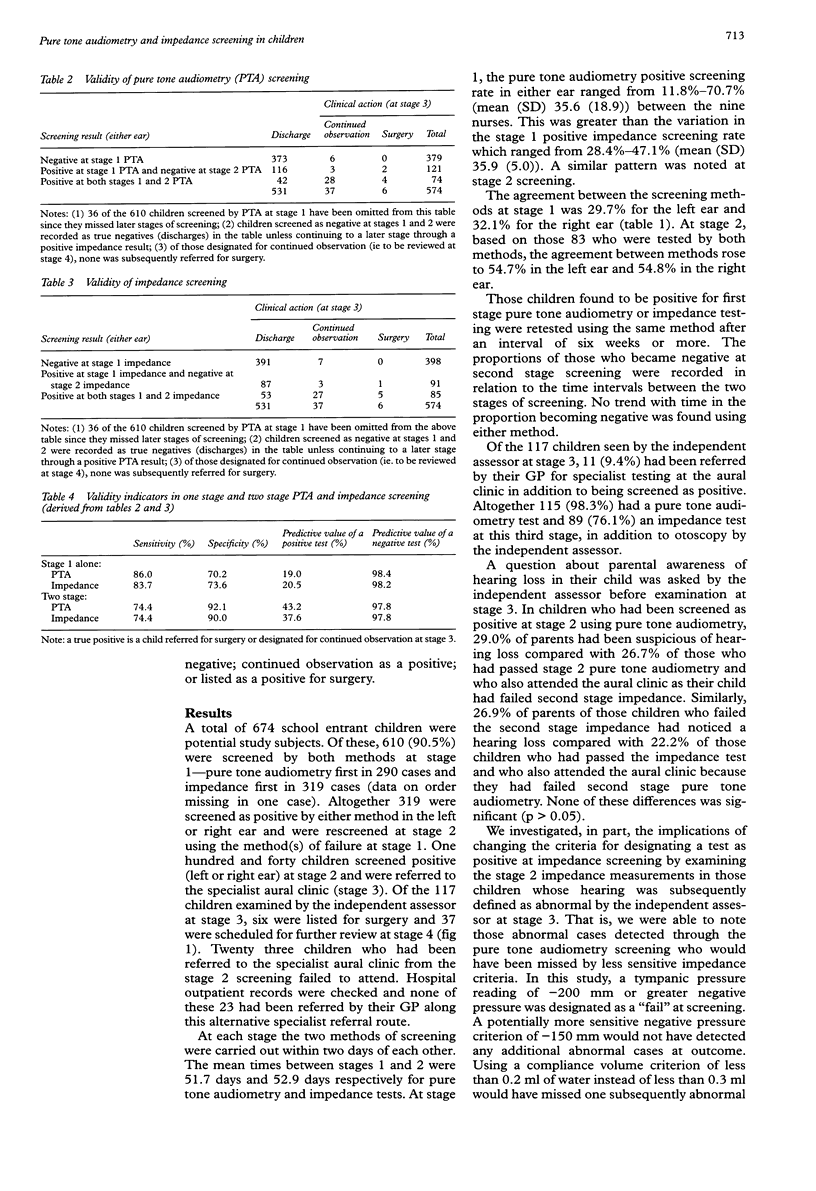
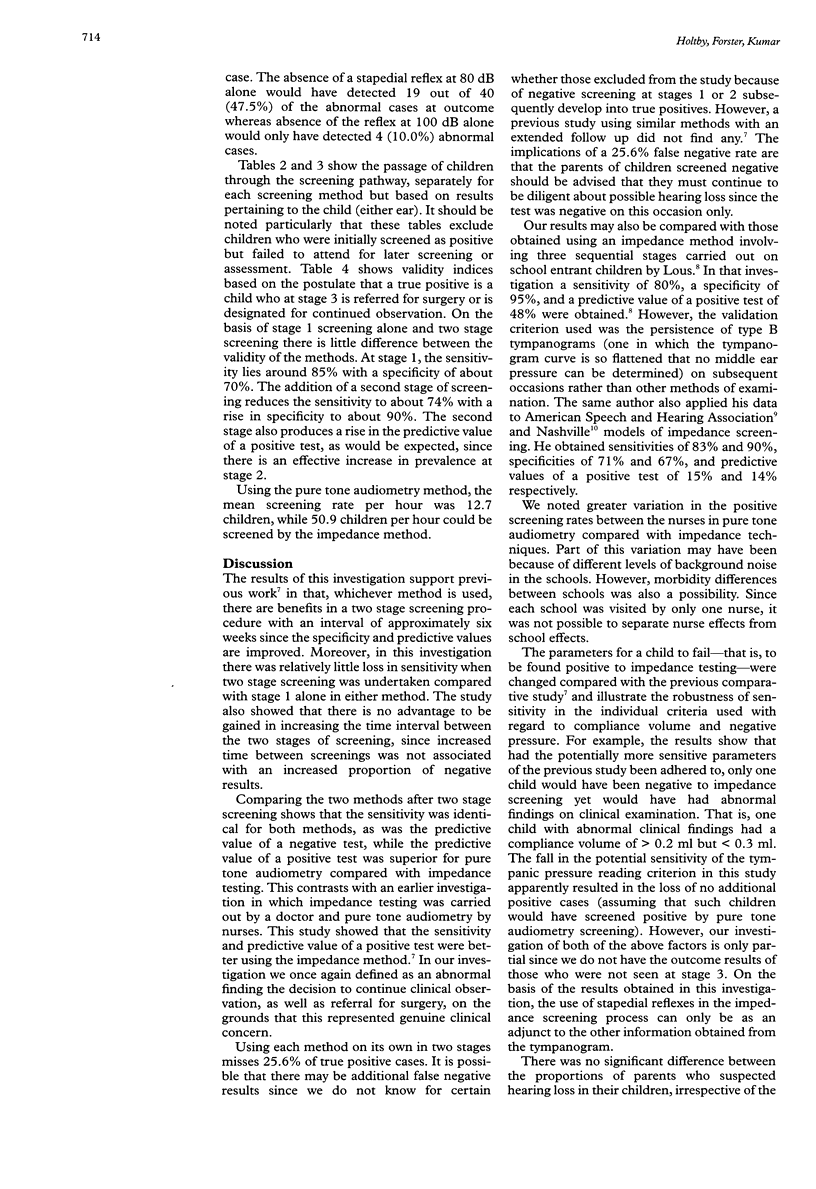
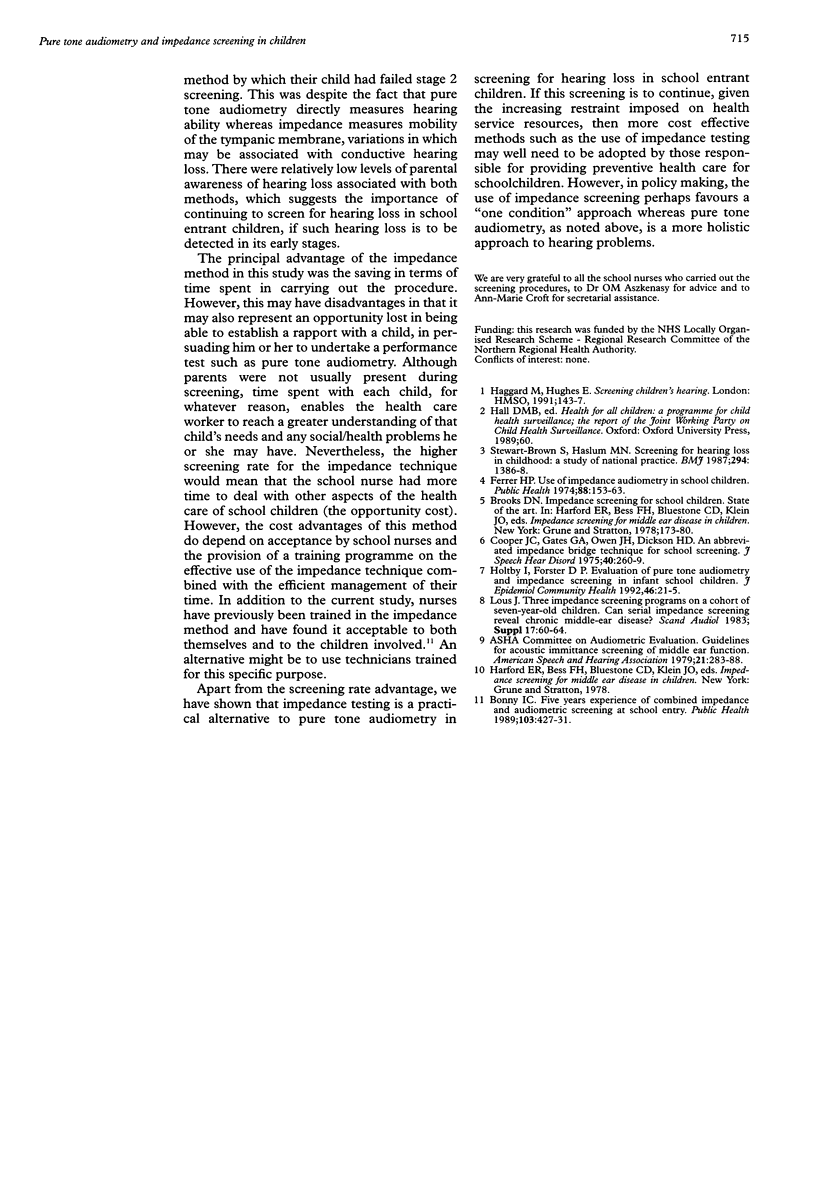
Selected References
These references are in PubMed. This may not be the complete list of references from this article.
- Bonny I. C. Five years' experience of combined impedance and audiometric screening at school entry. Public Health. 1989 Nov;103(6):427–431. doi: 10.1016/s0033-3506(89)80052-6. [DOI] [PubMed] [Google Scholar]
- Copper J. C., Jr, Gates G. A., Owen J. H., Dickson H. D. An abbreviated impedance bridge technique for school screening. J Speech Hear Disord. 1975 May;40(2):260–269. doi: 10.1044/jshd.4002.260. [DOI] [PubMed] [Google Scholar]
- Ferrer H. P. Use of impedance audiometry in schoolchildren. Public Health. 1974 Mar;88(3):153–163. doi: 10.1016/s0033-3506(74)80045-4. [DOI] [PubMed] [Google Scholar]
- Lous J. Three impedance screening programs on a cohort of seven-year-old children. Can serial impedance screening reveal chronic middle ear disease? Scand Audiol Suppl. 1983;17:60–64. [PubMed] [Google Scholar]
- Stewart-Brown S., Haslum M. N. Screening for hearing loss in childhood: a study of national practice. Br Med J (Clin Res Ed) 1987 May 30;294(6584):1386–1388. doi: 10.1136/bmj.294.6584.1386. [DOI] [PMC free article] [PubMed] [Google Scholar]


